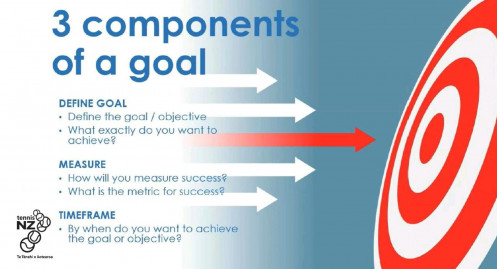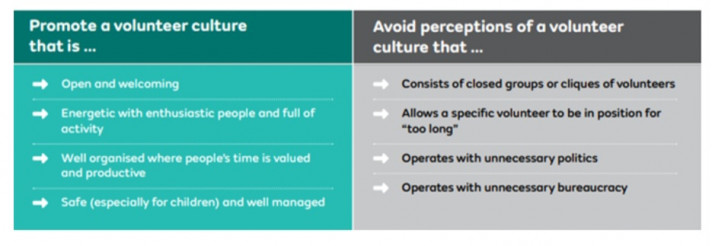Attracting and Retaining your Volunteers
He aha te mea nui o te ao. He tāngata, he tāngata, he tāngata.
What is the most important thing in the world? It is the people, it is the people, it is the people.
Volunteers choose to contribute time, skills and experience for no payment, to benefit their community. So how can you find and hold on to these amazing people who help your organisation thrive?
Volunteers need to inspire other people to be part of your club either as a member or a fellow volunteer. They are often the shop front to your club, if they are enjoying their experience, your club will benefit. Ensuring you have a positive volunteer culture is key to recruiting and retaining volunteers.
Watch this video to learn about the Volunteer Toolkit
Planning for volunteers includes setting goals that align with your club's strategic plan. With these in place, the club has clear direction, enabling you to start allocating resources and jobs. It also allows for a more targeted approach; a system for reporting, timelines, clarity around achievements, transparency and opportunities to review and make changes.
When your club community understands your plan, they are more likely to engage as they can see the potential result and the reasoning. From your club’s strategic plan, your goals will be more obvious allowing you to build the volunteer jobs you need.
Information on Strategic Planning

Do you understand your organisation? What tasks and roles exist, and are there role descriptions for all positions?
Having a sound governance structure is important, having the policies and documents that communicate the governance structure helps create strong clubs. Clear descriptions of each role is key, outlining time and skills required.
Defining the operational tasks of your club can take place in different ways. You may have job descriptions in place, or work with the people that are in the roles documenting what they do. This exercise gives you insight into what you are actually doing. Do all these roles align to your strategy and goals, and are they achieving the outcome you need or want? This is an essential part of finding out what your club is spending time on.
Being very clear about the job makes it easier for people to say, yes, I'm happy to give you that time, I understand the reporting process and I have those interests, passions or skills.

Creating an effective club structure starts to come together from understanding your goals and the operational tasks required, allowing you to assess your club structure. An effective club structure is important for many reasons, within volunteer recruitment and retention it enables the club to understand where all volunteers fit in and what their tasks are.
We often look at volunteers as committee members, holding a position or role. There are so many other ways of people volunteering that sit within your structure - selling raffle tickets, attending fundraising events, social rosters, event promotion, club maintenance, networking with local communities or sports clubs/schools, social committees, council liaison, or communications team. Often these smaller volunteerisms may not get recognition, but they help to produce more volunteers, and the more social people are in your club the more likely they are to evolve into a belonging and future volunteers in larger roles.

It is highly recommended that you engage a volunteer coordinator. The ideal person buys into the concept of creating a great volunteer culture and environment, someone passionate about supporting other people and preferably have volunteer experience allowing them to relate to the purpose of this role.
An organisation's culture is made up of the values and beliefs of its members. A positive culture is where volunteers feel appreciated and supported thus attracting volunteers, While a negative culture will do just the opposite. One of the challenges clubs and organisations face is creating a 'contributing' culture where members take part in running the organisation rather than treating it as a service.
It’s crucial for volunteers to highlight the positive aspects of their experience—like the friendships formed, the rewarding sense of contribution to the club, and the fun of being involved. Sometimes, the conversation can take a negative turn, which makes it harder to foster a welcoming volunteer culture. To attract new people, we need to share the enthusiasm and showcase the benefits of volunteering.
Establish the expectations of volunteering participation, an expectation that your people will contribute in some way to the club. This is a part of setting culture, part of moving people's minds, getting people to understand that you need their help. Don’t just advertise the role once, keep putting out there. Talk to people directly. Decide the club culture and volunteering expectations, be clear and spell it out every time a new member joins the club. Most people don’t mind helping out, they just need to know when and how. Is it once a week? Twice a season? Is it just selling a book of raffle tickets twice a year? Helping out at three events a year?
Remind people. Promote the need for volunteers on your club’s website and in newsletters. Comments like “your contribution makes a difference” or “help us at our next event” continually reminds members that there is a culture of helping and volunteering at your club. Talk to people, it’s the most effective way to recruit. “You have the skills; I think you’d be great at this job. Would you prefer to share the role”? Understand the barriers so you can work around them.
Welcome kit
Assess your club culture
Induction checklist
Volunteer recognition checklist
Newsletter – volunteer thanks example
Club volunteer poster
Volunteer review questionnaire
Common volunteer challenges
Volunteer recognition calander

The Club Culture Programme can help your club grow volunteer engagement

































